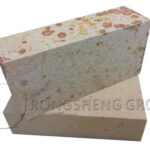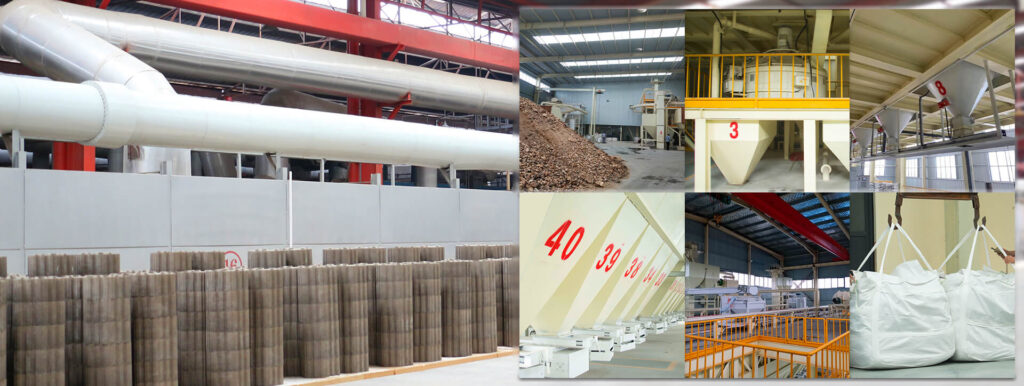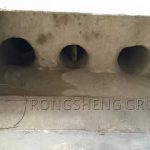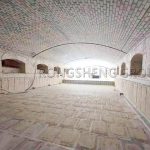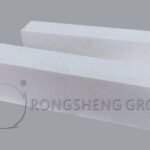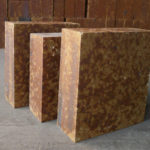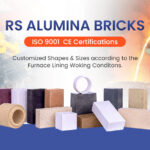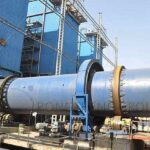Fused zirconia corundum bricks, commonly known as white iron bricks or fused cast zirconia corundum bricks, are important refractory materials to ensure the normal operation of glass-melting furnaces. Fused zirconia corundum bricks for glass kilns resistant to erosion by molten glass. At present, glass melting furnaces at home and abroad can increase melting rate, prolong kiln life and reduce fuel consumption mainly because of the use of this refractory material. According to Rongsheng refractory manufacturers, corundum bricks are the most widely used refractory materials for glass kilns.
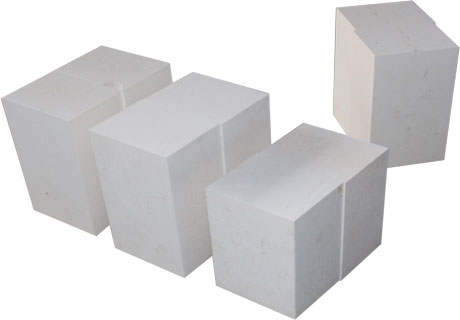
Application of Corundum Brick in Glass Kiln
Corundum bricks are refractory brick products with an aluminum content of more than 90%, and can also be called alumina refractory products. Corundum bricks can be divided into sintered corundum bricks and fused corundum bricks according to the basic materials used. In order to better meet the needs of the kiln, other chemical mineral components are usually added to the production process of corundum bricks to form composite products. Such as zirconium corundum bricks, chrome corundum bricks, etc. In glass melting furnaces, α-corundum bricks, α-β corundum bricks, and β-corundum bricks are usually the most widely used.
It is well known that corundum has high hardness and a high melting point. At the same time, corundum also has good corrosion resistance, and can still have good stability under the action of slag, metal, and glass liquid. Therefore, good effects can still be obtained when used in a high-temperature oxidizing atmosphere or a reducing atmosphere above 2000°C in a glass kiln.
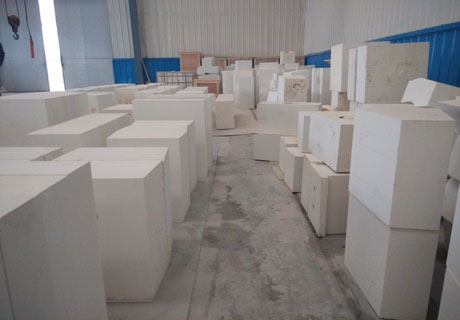
Erosion of Molten Glass on Fused Zirconia Corundum Bricks
The erosion process of molten glass on fused zirconia corundum bricks is a complex physical and chemical process. Although the erosion mechanisms of different refractory materials are different, they are all processes in which the solid phase dissolves in the liquid phase. The dissolution rate of the fused zirconia corundum brick depends on the reaction rate with the glass liquid and the diffusion rate of the reaction product to the glass liquid. In the Glauber’s salt batch material, if excessive Glauber’s salt is introduced, a layer of “salt water” will float on the glass liquid surface, which will strongly corrode the fused zirconia corundum bricks for glass kilns.
Scouring Erosion of Fused Zirconia Corundum Bricks by Glass Melt
The molten glass erodes the fused zirconia corundum bricks, and the erosion products first enter the phase interface and then diffuse into the molten glass body. However, due to the high viscosity of the glass liquid, diffusion is not easy. Therefore, the erosion products will be enriched at the phase interface and become a “protective film” to prevent the erosion products from entering the fused zirconia corundum bricks. However, the glass liquid is actually in a flowing state, so the “protective film” may be lost, exposing the surface of the new fused brick, and creating conditions for further erosion. In addition, the flowing glass liquid also has a mechanical scouring effect on the fused zirconia corundum bricks.
In glass production, any of the following situations can lead to the loss of the “protective layer” and the erosion of fused zirconia corundum bricks for glass kilns by molten glass.
- The natural convection of molten glass is caused by the existence of a temperature gradient in molten glass.
- The production flow is caused by feeding and molding and the complex liquid flow is caused by the structure of the kiln pool.
- Use methods such as bubbling and stirring to strengthen the flow of molten glass.
- Fluctuation of glass liquid level.
In addition, if there is a large difference between the density of the erosion product and the density of the glass liquid, the “protective layer” will also be lost.
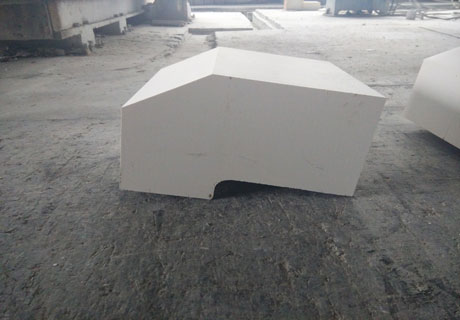
Composition and Structure of Fused Zirconia Corundum Bricks
The erosion effect of molten glass on fused zirconia corundum bricks for glass kilns is not only related to the chemical composition of molten glass, but also to the chemical composition of fused zirconia corundum bricks. For this reason, it is required that the fused zirconia corundum brick is compatible with the chemical composition of the molten glass. Strongly acidic molten glass, such as Pyrex molten glass, has a weak erosion effect on acidic fused zirconia corundum bricks. Glass liquid with high Al2O3 content is not easy to corrode high-alumina fused zirconia corundum bricks, while medium-alkali and high-alkali glass liquid has a strong erosion effect on quartz bricks.
The reason why fused zirconia corundum bricks have better resistance to glass liquid erosion than fused mullite bricks
Fused zirconia corundum bricks for glass kilns have better corrosion resistance to molten glass than fused mullite bricks, the main reasons are as follows.
- The main crystal phase in zirconium corundum bricks is corundum and baddeleyite, which coexist closely, and these two crystal phases have good corrosion resistance.
- The glass phase in the zirconium corundum brick is filled between the above-mentioned crystal phases, and this glass phase is corroded by the high-temperature glass liquid to form albite glass with extremely high viscosity. The viscosity is higher due to the melting of a certain amount of ZrO2 in it. This layer of high-viscosity glass remains on the surface of the fused brick and is not easy to spread, thus protecting the brick body.
The corrosion resistance of fused zirconia corundum bricks increases with the increase of ZrO2 content. Because the melting temperature of ZrO2 is as high as about 2700 °C. And has a high ability to resist acid, alkali and glass liquid, and other media.
Due to the above advantages, fused zirconia corundum bricks for glass kilns are not only used in high-temperature and severely eroded parts in contact with molten glass but also widely used in the superstructure of glass melting furnaces.
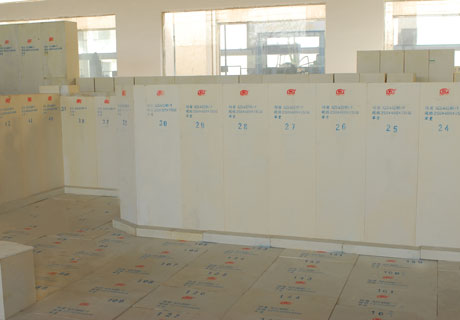
Manufacturer of Fused Zirconia Corundum Bricks
Rongsheng refractory material manufacturer is a powerful refractory material manufacturer. It not only has a high-grade refractory bricks production workshop but also has a fully automatic monolithic refractory production line. Our refractory products have been sold to more than 70 countries around the world. For example, South Africa, Philippines, Chile, Malaysia, Indonesia, Vietnam, Kuwait, Turkey, Zambia, Peru, Mexico, Qatar, Egypt, Russia, Kazakhstan, etc. To purchase high-quality corundum bricks and fused zirconia corundum bricks for glass kilns, please contact us. We will provide you with the most suitable refractory brick products for your production needs according to your specific needs.

